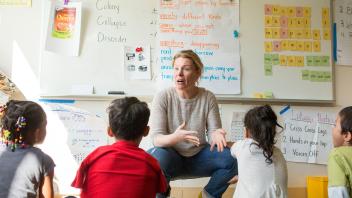Teacher question:
My question is about disciplinary literacy. Should we be guiding teachers to integrate social studies or science and ELA or having our ELA teachers teaching disciplinary literacy for these subjects? Our curriculum focuses on overarching concepts and essential questions.
Shanahan’s response:
You raise two separate issues here: curriculum integration and who has responsibility for the disciplinary literacy standards.
Let me take them one at a time.
I don’t oppose integrating social studies or science and literature, but I’m definitely cautious about such combinations.
We want our students to develop a clear appreciation of what literature is, how it’s read, what it brings to the table, and so on.
We want the same for history and science and math and music and the visual arts and physical education and … well, you get the idea.
The tendency in integrated instruction is to kind of knock the edges off those different subjects; like using literature as an information source in a social studies class, rather than as a work of art that conveys a mood, tone, or zeitgeist of an era. Thus, in such units we may have kids reading historical fiction that aims to recreate the era under study, rather than considering the implications of the art that emerged from the historical period in question. We’ll have kids reading Johnny Tremain in a history unit about the American Revolution (which fictionalizes various events in revolutionary Boston), but not the children’s books of the late 18th Century which could help reveal the nature of life at the time.
(And, of course, even with the reading of historical fiction, a good deal of the accompanying LEA instruction should still focus on issues that would be of little importance to the integration with the social studies … characterization, plot structure, vocabulary, syntax, cohesion, and so on.)
Equally problematic, on the social studies side of such integration, is the danger of treating the historical, geographical, and economic texts in a fashion more appropriate to literature (like accepting a novel as an independent work of art, not requiring corroboration from other sources).
The same is true for science, of course. Philip Dick’s science fiction is wonderful, and yet, what a terrible source for developing an understanding of physics (and comparing the factual underpinnings of his science with today’s scientific findings may have some limited literary value but would not be expected to foster a deep understanding of science).
However, if you can integrate science or social studies with literature in ways that allow kids to appreciate specialness of each including how they differ and what they bring to the party — and that will lead to deep knowledge on both sides of the curricular divide — then go for it. (Let’s face it. That is almost impossible to do with mathematics, so I’m not even trying to give examples of that.)
If that can’t be accomplished, then avoid integration.
There are lots of authoritative recommendations encouraging curriculum integration, but very few studies with findings showing it to be effective. It is hard to do well, but when it is done well, the results can be satisfying.
And, as for your second question:
The emphasis on disciplinary literacy in many states’ educational standards is not aimed at increased integration of teaching across subject matters. It is aimed at teaching students how to engage in the special reading and writing routines inherent in the body of knowledge and inquiry approaches of the various disciplines.
Reading, as such, is neither a content area nor a discipline.
Teaching students to negotiate the special text features of different kinds of books (science, math, history, and literature texts differ in many ways), or to read and write in the specialized ways of an historian, literary critic, mathematician, or scientist are not about combining curriculum goals or standards across classrooms or an attempt to get teachers to work together.
Disciplinary literacy is being emphasized because the reading and writing of the different disciplines is specialized and even unique. Those literacy routines are linked to the content and inquiry approaches of the disciplines, and as such require attention in each of those classes.
The ELA teacher should not be the one charged with the responsibility of fostering an ability to read like a scientist. That needs to come from the science teachers who will be teaching science content, assigning science texts and writing assignments, and engaging kids in scientific inquiry.
My hesitation about integration has to do with the importance of protecting the content of the subjects that are to be combined.
The emphasis on learning the discipline-specific requirements of reading and writing is really part of this same hesitation. Teachers in the disciplinary subjects need to stop protecting their students from the reading requirements of their disciplines and start teaching them to engage in the discipline-specific literacy practices that won’t be learned elsewhere. That has nothing to do with curriculum integration, nor is it aimed at getting ELA teachers to try to be science or social studies teachers.

